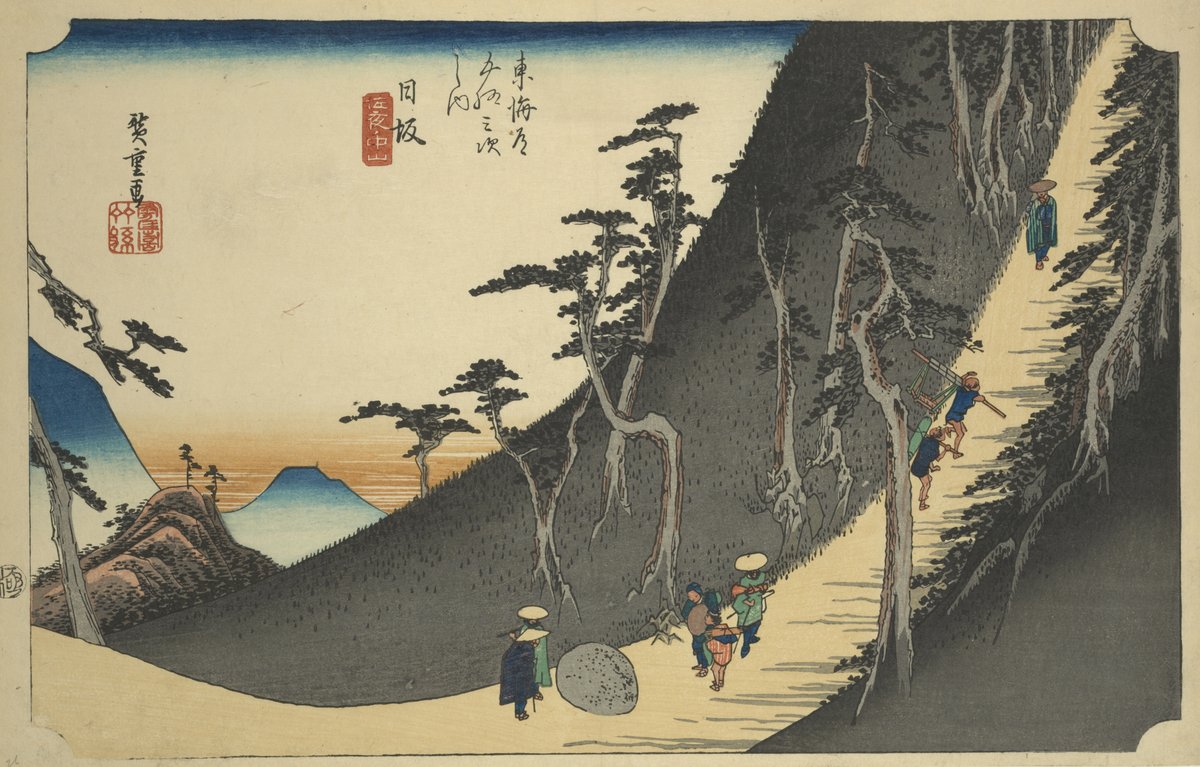
【~連載~静岡の歴史を学ぼう297】 The Tokaido Route and pine trees 東海道と松の木
※ この記事は「静岡移住計画Facebook」に掲載しております。
2024年今年の立冬は11月7日でした。この日から暦の上では冬になります。この時期になると松の木に菰(こも)が巻かれる「こも巻き」が見られます。
松の木と言えば、おめでたいイメージや日本庭園にある木ですね。しかし江戸時代の発想では松は実用的で、街道の木としては松が一番でした。
The Tokaido Route and pine trees
東海道と松の木
Why were pine trees often planted along the Tokaido Route?
どうして東海道沿いには松の木がよく植えられたのでしょうか?

海から近い街道に松が植えられているのが見える。
白須賀は現在の静岡県湖西市。静岡県で一番西側の宿。
It is thought that pine trees are salt resistant and are robust even in periods of drought.
松の木が塩に強く、干ばつにも耐えられるほど強いからだと考えられています。
They can grow even in tough conditions.
松は厳しい環境下でも育ちます。

Moreover, they are evergreen most of the year, so locals do not need to clean up the leaves underneath so often.
さらに、松は常緑樹なので、木の下をそんなに清掃をする必要はありません。(と、参考資料にあったのですよ)
In addition, pine trees were highly reusable. Some trunks of the trees were used for building structures such as bridges.
しかも、松の木はリサイクル性が高く、幹は橋のような建築資材で使われました。
However, there was a proper sell-off disposal system.
しかし、払下げのシステムがありました。
Even locals could not reuse these fallen or dead pine trees without an official permission from the feudal government.
地元の人々であっても倒木や枯木(こぼく)を幕府の許可なしで使うことはできませんでした。
The Tokaido route and everything on it including the trees were managed by a magistrate called 'Dochu-bugyou'.
東海道と木々を含めた道に関わるものすべて、「道中奉行」という奉行によって管理されていました。

They were in-charge of the maintenance of all trees.
道中奉行はすべての木の維持を担当していました。
With the proper execution of their task, the road condition was well-maintained.
しっかりと仕事をしてくれたので、道は大変良い状態で維持されていました。
’Komomaki’, wrapping pine trees with straw belts, was also an important action to eradicate harmful insects to preserve and protect these trees.
松を帯状になった藁で巻いた「こも巻き」は松の木を保存し守るため、害虫を退治するとても重要な手段でした。

The custom is still common in the present day and is often seen across Japan to continuously nurture pine trees.
その風習は現在でも一般的で、松が元気で成長するよう日本中でよく見られます。
参考資料)「江戸時代の道づくり ―神奈川県の東海道―」
神奈川県東海道ルネッサンス推進協議会
いいなと思ったら応援しよう!

